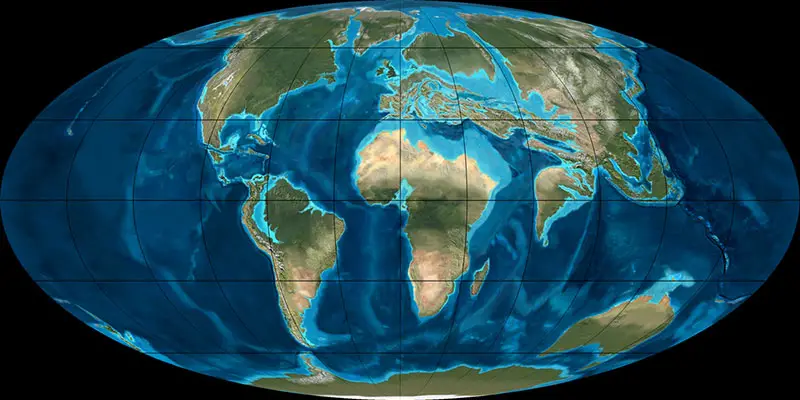†Choctawius (Microsyopidae)
Choctawius ist eine Primatengattung innerhalb der Familie Microsyopidae, deren 3 Mitglieder ab dem frühen Paläogen (Eozän) im Ypresium lebten, das vor ungefähr 56 Millionen Jahren begann und bis vor 47,8 Millionen Jahren andauerte. Viele Überreste wurden in Vereinigte Staaten von Amerika (USA) gefunden.
Choctawius ist der Gattungsnahme zweier ausgestorbener Primatenarten aus der Familie Microsyopidae (Unterfamilie Uintasoricinae).
Die beiden Vertreter der Gattung (C. foxi, C. mckennai) lebten im ausgehenden Paläozän und frühen Eozän in Nordamerika. Ihre Überreste stammen aus Mississippi und New Mexico.
Choctawius foxi
Das Typusexemplar Trägt die Bezeichnung CM 70412, wobei es sich um einen linken unteren Backenzahn handelt (M2). Der Fund stammt aus der Tuscahoma Formation von Mississippi und ist zwischen 55,4 und 50,3 Millionen Jahre alt. Die Morphologie des Zahns deutet darauf hin, dass Choctawius foxi ein Allesfresser (Omnivore) war, der seine Nahrung auf Bäumen suchte, wo er auch lebte.
| Sammlung | Kommentar zum Fundort | Epoche, Alter | Geologie, Formation | Kommentar zur Sammlung |
|---|---|---|---|---|
| Red Hot | Tuscahoma | Red Hot Truck Stop; CM locality 517; TF-M | ||
| Kommentar z. Stratigraphie | Lithographie | Kommentar z. Taxonomie | ||
| said to be early Wasatchian "near the top" of the formation "beds... almost certainly correlate with marine nannoplankton zone NP 9" the Tuscahoma underlies the Bashi Marl and both are in the Wilcox Group (see Hatchetigbee Bluff) | "glauconitic, estuarine channel sand" | a total of "some" 25 mammal species are present, hence, the current least is nearly complete |
| Physiologie | |
|---|---|
| Gewicht: | ? |
| Schwestertaxa | |
Choctawius mckennai
Choctawius mckennai war vermutlich wie sein Verwandter ein baumlebender Allesfresser (Omnivore).
| Sammlung | Kommentar zum Fundort | Epoche, Alter | Geologie, Formation | Kommentar zur Sammlung |
|---|---|---|---|---|
| Almagre (Upper Largo) | San Jose | AMNH Quarry 58; Mercer Ranch | ||
| Kommentar z. Taxonomie | ||||
| from the headwaters of the Upper Largo records from a cluster of sites shown to be on the Continental Divide between Canada Larga and Almagre Arroyo by Lucas et al. 1981 are given below; all of them are within 2 km N or NW of AMNH Quarry 58, including AMNH Quarries 51 and 59 and NMMNH Locs. 963, 1028 sites within 1 mi W of Quarry 58 such as NMMNH 386, 1015, 1020 also are included Quarry 58 is close to Simpson's Section 2, which spans the upper 450' of a 900' composite section Apatemys bellulus - "Teilhardella whitakeri": Simpson 1954; type, from AMNH Quarry 59 Cantius frugivorus Williamson et al. 1989: NMMNH Loc. 963, Loc. 1020 Pelycodus danielsae Froehlich and Lucas 1991: type; NMMNH L-386 Meniscotherium chamense Williamson and Lucas 1992a: NMMNH Loc. 1028 |
Literatur
F. S. Szalay 1969, Mixodectidae, Microsyopidae, and the insectivore-primate transition. Bulletin of the American Museum of Natural History. 140:4, p. 193 - 330K. C. Beard, M. R. Dawson 2009, Early Wasatchian mammals of the Red Hot local fauna, uppermost Tuscahoma Formation, Lauderdale County, Mississippi. Annals of Carnegie Museum. 78:3, p. 193 - 243
